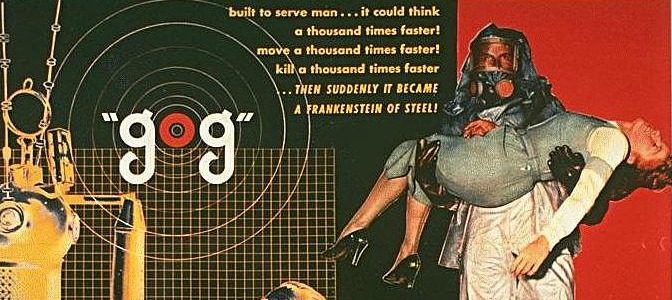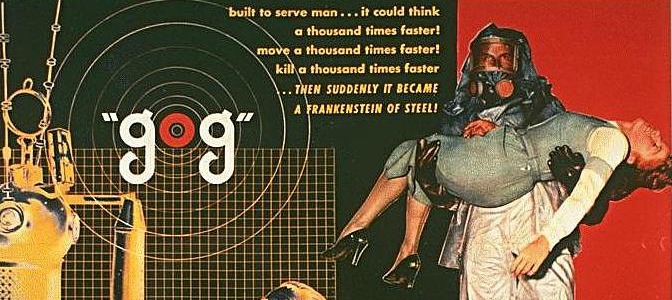The 3D Film Archive was founded in 1990 by award-winning producer, author and film archivist Bob Furmanek, who we welcome to the Cambridge Film Festival this year. The Archive is the first organisation dedicated to saving and preserving our stereoscopic film heritage. Cambridge 105’s Toby Miller spoke to Bob about the archive rarities which screen at the event: a time capsule ranging from ballet to comedy.
Toby Miller: The common perception is that 3D films are always part of a fad, whether it’s HOUSE OF WAX in 1953 or AVATAR in 2009. But your archive shows that attempts at 3D filmmaking are almost as old as cinema itself.
Bob Furmanek: There were tests and experiments done even before the turn of the last century. June 10th 1915 is the date of the first documented public exhibition of a 3D film. It took place in New York City, in the Astor Theatre in Times Square. 3 reels of footage, in the original red and green anaglyphic system, were shown to an invited audience.
But it wasn’t until 1922 that the film stock was available to allow filmmakers to put both the Red and Green images onto the one strip of film. This was the technology used for the first 3D feature, THE POWER OF LOVE, a film which is now sadly lost.
TM: What do you think drove these early attempts at 3D?
BF: 3D wasn’t designed as a fad, or a way to make more at the box office. It was a real dedicated effort by the pioneers to make the movies as realistic as possible. You have to remember that 3D photography dates back to the 1860s, and it was a very popular trend for people to have stereoscopes in their homes. Families would look at these stereo images taken around the world, they could suddenly see something that most people couldn’t afford to see in person – through the miracle of 3D photography they could go to Egypt, or they could go to Africa. So, I think the attempt to translate that to film was there from the very earliest days of cinema.
TM: Is the current trend for 3D capitalising on the effect, or is the theatricality and mischievousness of early 3D missing?
BF: I think what is happening with the current 3D work is that the filmmakers and cinematographers are so reluctant to give a real immersive experience on the screen that they’re effectively cutting back on the amount of depth in the new 3D films. A lot of people say the current 3D trend is more 2 1/2 D.
TM: This year you’re bringing GOG to the Cambridge Film Festival. Despite being released at the height of the 50s 3D boom in Hollywood – it was out only the year after It Came From Outer Space – GOG has been forgotten. Why do you think it isn’t better known?
BF: I feel a big reason for its obscurity is the fact that it was out of circulation for many years, especially in the 1970s and 1980s. While other vintage science-fiction films received prominent exposure on television, GOG was usually relegated to the late, late show. Plus, when it was shown, the prints were grainy, flat, black and white full-frame 16mm copies; a far cry from the original and vibrant color, widescreen and 3-D version photographed by the filmmakers.
TM: This is the first UK screening for GOG in 3D ever, but am I right in thinking that even in the USA, at the time of its original release, there wouldn’t have been much of a chance to see GOG in 3D?
BF: That’s correct. Principal photography was completed in September 1953 but it did not get a theatrical release until the following June. By that time, 3D movies were dead at the box office and it only received seven known 3D bookings. It has never played Great Britain in 3D.
TM: So many of films from this productive period of 3D in 1950s – whether they’re westerns or science fiction or war films – don’t seem to have enjoyed proper 3D releases. I wondered if there was a fashion for 3D from the Hollywood studios that the cinema and the projectionist couldn’t service?
BF: To project 3D in 1953, operators were required to precisely interlock two 35mm projectors containing the left and right side prints. If the shutters were slightly out of phase, the image was watery on screen. If they were out of sync even by one frame, the audience got a headache and that’s a big reason why 3D films died so quickly. The Polaroid company provided both the filters and glasses and they conducted some field tests in October 1953. Their results showed that 50% of 3D presentations were presented out of sync. It’s no wonder the process died out so quickly.
TM: Your website mentions the challenge you faced in restoring GOG. Where do you even start with restoring a film print as damaged as this one was? I imagine you first have to locate both prints of the film – the left eye and the right eye?
BF: That’s correct. GOG was lost in 3D for nearly five decades until I found the last surviving 35mm print of the left side in 2001. It was an original 1954 release print on Pathe colour stock and it was terribly faded. MGM had 35mm material on the right side, so when we began our restoration, we had to painstakingly match every scene frame by frame. Our usual timeline for a 3D feature restoration is three months; GOG was on the operating table for five. Each shot required up to seven levels of correction, including colour restoration, left/right panel matching, flicker reduction, image stabilisation, detail extraction from the superior right side element, stereoscopic vertical alignment and dirt/damage clean-up. Greg Kintz, Technical Director for the 3D Film Archive, achieved absolutely amazing results. We’re very proud of the final result in bringing this lost 3D classic back to life.
TM: You’re also bringing other 3D gems to screen alongside GOG. Would you be able to tell us a little about those?
BF: I’m bringing a few rarities from the Archive. One is a 15 minute reel of incredible 3D footage from the Dean Martin and Jerry Lewis Technicolor feature, MONEY FROM HOME, which has never been seen in the UK in 3D. The second film is a very exciting world premiere of the previously lost 3D short, HARMONY LANE. Advertised as the “First British 3D Musical,” it was filmed in March 1953 but never released in that format. This short is like spending a night at the Palladium with several variety acts, including dancing by the Jack Billings Trio; a song by the Beverley Sisters; “Swan Lake” with the Sadler’s Wells Ballet and a wonderful comedy routine and song by Max Bygraves. The short sat on the shelf until late in 1954 and by that time, 3D was dead at the box office so it was only shown flat. We found the lost left/right elements at the British Film Institute in August 2014, and after securing permission from director Lewis Gilbert, we were able to restore this fabulous time capsule.
Click here to find the podcast and other great interviews at Bums on Seats, Cambridge 105.
httpvh://youtu.be/-Haw0Ua-tG0


